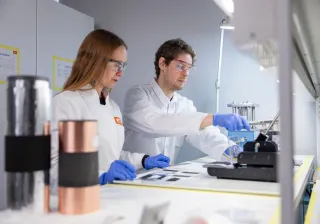At the beginning of 2021 VTT started to buy renewable electricity verified with a guarantee of origin for its premises. The change significantly reduced the annual greenhouse gas emissions from VTT's operations. Meanwhile, it is an important step toward VTT's goal of carbon neutrality.
Sustainability is at the core of VTT's strategy, and with respect to environmental responsibility, the goals include carbon neutrality by 2030. This requires significant action aimed at reducing greenhouse gas emissions.
Consumption of electricity has been the overwhelming source of emissions caused by VTT activities. The transition to renewable electricity verified by a guarantee of origin changed the situation.
“The estimated greenhouse gas emissions from electricity bought by VTT were more than 9,000 tons in 2020. In 2021 this had gone down to about 600 tons. The change is truly significant”, says Senior Scientist Hanna Pihkola. In 2021 93% of the electricity consumed by VTT was under a guarantee of origin.
As the production of renewable energy also produces greenhouse gas emissions, the shift to renewable energy raised indirect emissions connected with VTT operations to some degree. However, the increase is fairly small compared with the reduction of emissions from the use of electricity.
Next attention to heating, air travel, and procurements
The reduction in emissions from the use of electricity is taking VTT closer to its carbon neutrality goal, but much work remains to be done. After the use of electricity, the greatest emissions caused by VTT come from the heating of buildings and air travel.
VTT's next development targets on the way to the carbon neutrality goal of 2030 are:
- ascertaining the possibilities of procuring low-emission, or carbon neutral district heating
- improving energy efficiency
- reducing flight emissions
- taking climate impact into account in the procurement of goods and services.
“Carbon neutrality by 2030 is an ambitious goal. To achieve the goal, much work needs to be done and many stones need to be turned in different parts of the organisation. When all possible measures to reduce them have been implemented, we will also have to ponder how best to compensate for the emissions that remain”, Pihkola says.
VTT's annual greenhouse gas emissions have been evaluated according to the principles of the ISO14064-1:2018 (carbon footprint calculations for an organisation) standard since 2018. The emissions are reported as part of VTT's annual and corporate responsibility report




